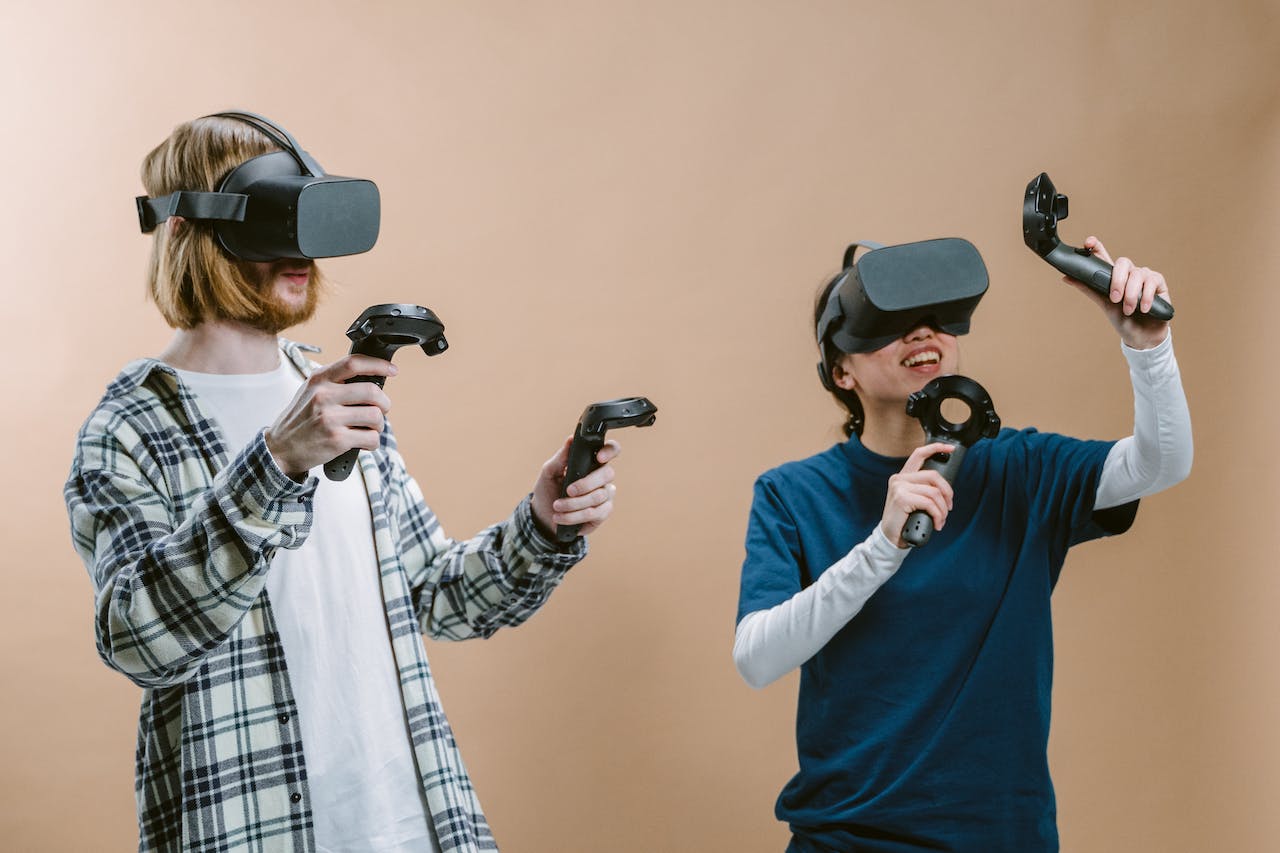In virtual reality gaming, creating captivating game worlds is not just an art; it’s a sophisticated science that blends imagination with technology. Virtual reality (VR) ‘s unique nature presents designers with unparalleled opportunities and formidable challenges in crafting immersive and engaging experiences. Unlike traditional gaming, VR requires a deeper understanding of spatial design, narrative techniques, and user interaction to create compelling game worlds.
Creating a strong sense of presence is the cornerstone of VR game design. Players should feel like they are “inside” the game world, experiencing it viscerally. This necessitates meticulous attention to detail in world-building. Designers must create visually stunning settings that are rich in interactive components. Every texture, sound, and interaction in VR must be meticulously developed to enhance the illusion of reality. The idea is for users to forget they’re wearing a headset and believe they’re in a virtual environment.
Another important aspect of VR game creation is narrative. Traditional storytelling techniques may not always work in a 360-degree environment when the player has complete control over where they gaze and travel. As a result, VR game designers frequently use contextual storytelling approaches, where the narrative is woven into the fabric of the game world itself. The setting may include hints about the tale, prompting players to explore and uncover. This can result in a more engaging and intimate experience since players believe they are discovering the tale rather than being guided.
Interactivity is important to virtual reality games, and how players engage with the virtual world is critical. Designers believe interactions must be intuitive and add to the whole experience. This could include how players travel around the game world, interact with things, and interact with non-player characters (NPCs). Because of the physicality of VR, interactions can be more lifelike, such as reaching out to grab an object or casting a spell using hand gestures. These interactions should be fluid and responsive to increase the player’s sense of immersion.
Furthermore, VR game design must take the player’s comfort into account. Because virtual reality can produce motion sickness or disorientation in some players, it’s critical to create physically comfortable games. This includes building interfaces and gaming elements that are easy to engage with and do not create strain or weariness and establishing movement mechanics that limit the danger of motion sickness.
The emotional impact of the encounter is an often-overlooked part of VR game creation. Because of its immersive nature, VR can potentially elicit significant emotional responses from players. Designers can use this to their advantage by incorporating emotional arcs into their games, which use the environment, story, and interactivity to evoke specific sentiments and behaviors from the player. This emotional involvement can potentially make VR games more memorable and meaningful.
In addition to these design concepts, VR game developers must be skilled at utilizing cutting-edge technology. Understanding the capabilities and limitations of VR hardware and remaining up to date on new advances in VR technology are all part of this. They must be able to push the frontiers of what is feasible in virtual reality while making their games accessible to a wide audience.
Along with these ideas, accessibility is becoming increasingly vital in VR game creation. Making VR games accessible to users of various skills is a critical component designers are working on. This includes options for varied control methods, customized interfaces, and features catering to different physical and sensory needs. By emphasizing accessibility, VR games can reach a larger audience, allowing more people to enjoy their immersive experiences. By embracing diversity and inclusivity, this approach broadens the market and improves the gaming community.
Finally, testing and feedback are critical in the development of VR games. Designers should interact with players early and frequently to get feedback to develop and improve the game. Because virtual reality is a new medium, there is still much to learn about what works and what doesn’t in VR game creation. In this learning process, player input can be extremely beneficial.
To summarize, building appealing VR gaming environments is a multidimensional process that involves a thorough understanding of immersive technology, player psychology, and inventive narrative. Designers must create experiences that are not only visually and interactively interesting but also comfortable, emotionally resonant, and accessible to a wide spectrum of participants. As VR technology advances, the possibilities for what can be accomplished in VR gaming expand, promising a future full of breakthroughs and inclusive virtual experiences. Combining these diverse features and creating environments that players want to explore and feel a part of are critical to the success of VR game creation.
